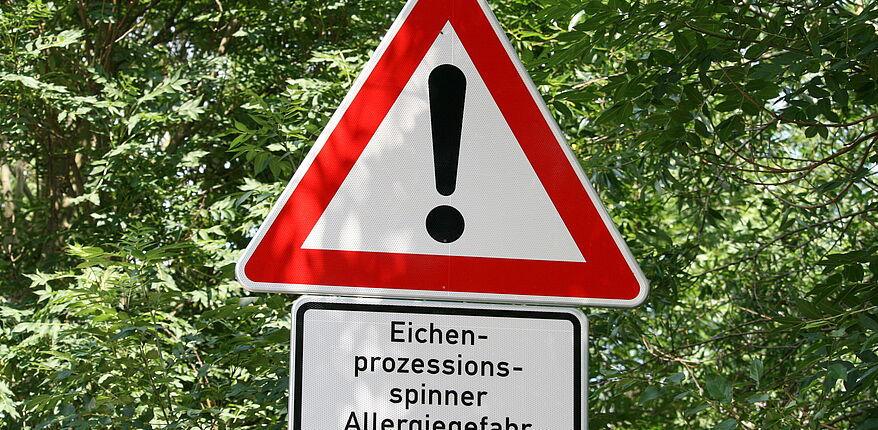Last year, infestation reports and subsequent control measures were carried out in the north of the Börde district. Areas in the municipalities of Oebisfelde-Weferlingen, Haldensleben and Wolmirstedt as well as the municipalities of Flechtingen and Elbe-Heide were affected.
What happens if an infestation is detected?
The caterpillars of the oak processionary moth can be controlled using three basic methods. Biological, chemical or mechanical.
From today's perspective, biological methods do not yet offer timely and effective health protection. For this reason, chemical and mechanical methods have been used in the Börde district to date. Control is regularly carried out by vacuuming the nests.
Is there a health risk?
The oak processionary moth is recognised as harmful in terms of active public health protection.
Harm to humans occurs when they come into contact with the stinging hairs of the oak processionary moth caterpillar from the third larval stage onwards. Contact is defined as wetting the human skin with stinging hairs, inhalation and contact with mucous membranes, e.g. in the eyes, nose and mouth.
This process can be triggered in different ways as follows:
If, for example, stinging hairs of the oak processionary moth detach from the caterpillar skins and get into the air stream (wind), they can be released into the environment up to several hundred metres away, depending on the geographical location and weather conditions.
If the skin is contaminated, a contact dermatitis with itching, reddening and blistering of the skin is expected as a body reaction. Inhalation causes irritation in the throat and, in severe cases, respiratory symptoms including bronchitis or asthma. If inhaled, irritation of the conjunctiva and, in severe cases, conjunctivitis and even corneal inflammation of the eye are described.
The danger increases if the infested trees are located directly next to roads with traffic, as contact can occur at short distances that cannot be recognised by passers-by or effectively averted.
The speed of movement of passers-by (cars, motorbikes, bicycles) and the associated strong airflow alone pose a considerable health risk, as described above.
General protective measures
If an infestation is already known, affected areas should be avoided. Avoid touching the caterpillars and spider nests in order to minimise contact with the skin, mucous membranes and eyes so as not to expose yourself to the health risks described above.
Even if there is currently no legal obligation to report the discovery of an infestation, known infestations should be reported to the responsible local authorities, as this is the only way to take measures to avert danger and protect public health.
What to do in the event of contact or contamination?
If contact does occur, skin and hair should be washed thoroughly, as should any clothing worn. In case of eye irritation, it is advisable to rinse the eyes with plenty of water.
Please seek medical treatment if symptoms occur. If severe allergic reactions with asthma and shortness of breath occur, please contact the emergency services immediately.
